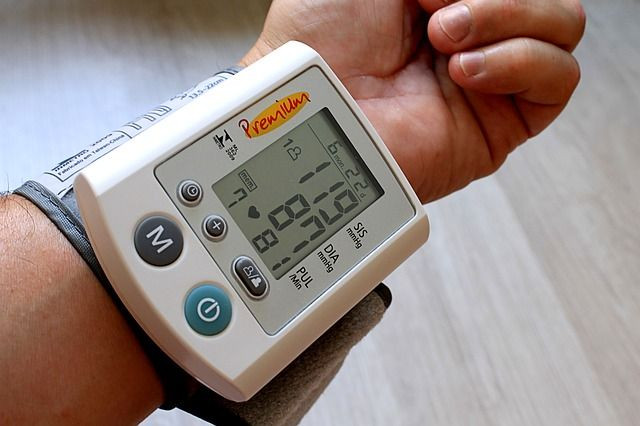Tracking High Blood Pressure From Middle Age Onward May Help Doctors Better Predict Risk Of Stroke, Death

Numbers play a huge part in our lives. Many of us start our day looking at the numbers on our alarm clock and end it the same way. In addition to being helpful with punctuality and organization, numbers can also be indicative of your overall health. For example, heart health numbers such as blood pressure can determine your risk for certain medical problems.
High blood pressure is often dubbed the silent killer because it’s associated with few or no symptoms. This means that many people with this condition, which affects about one in three United States adults, do not know they have it until it has done significant damage, according to the Centers for Disease Control and Prevention. These sobering prospects reinforce why people should check their blood pressure regularly. But new research published in the American Heart Association’s journal Hypertension suggests that in addition to monitoring blood pressure, doctors should keep track of and document a person’s blood pressure over time to better assess their health risks.
“We already know that high blood pressure is the biggest risk factor for stroke and that in people aged 50 to 75, it can change in a couple years’ time,” Dr. M. Arfan Ikram, senior author and associate professor of neuroepidemiology at Erasmus University Medical Center, said in a statement. “Yet, most studies looking at the relationship between high blood pressure and stroke have relied on a blood pressure measurement at a single point in time, rather than looking at the course of blood pressure and stroke risk.”
Blood pressure is recorded as two numbers written in a ratio with the top number representing a patient’s systolic blood pressure, which measures the pressure in the arteries when the heart beats, or when its muscles contract — and the bottom number representing the diastolic blood pressure, which measures the pressure in the arteries between heartbeats, or while the heart muscle is resting, according to the AHA. Blood pressure should normally be less than 120/80 mm HG for adults age 20 and older.
Stroke and heart disease are two of the leading causes of death for Americans — killing nearly 130,000 and 610,000 people each year, respectively — and are both associated with high blood pressure. The condition also increases one’s risk of dying from a heart attack, congestive heart failure, and atherosclerosis. These risks can be more effectively prevented if doctors knew the path of their patient’s blood pressure from middle age onward.
For the study, Ikram and his colleagues tracked the systolic blood pressure of nearly 7,000 people between the ages of 55 and 106 who lived in a suburb in the Netherlands over more than two decades. The cohort consisted of people who fit into four distinct blood pressure trajectories. Those in Class 1 experienced increasing blood pressure from normal systolic blood pressure in middle age to high systolic blood pressure (169 mm HG) at age 95; people in Class 2 started off with normal blood pressures in middle age and experienced a steep increase to very high systolic blood pressure (200 mm HG) during the same time period. The third class consisted of people who had moderate high systolic blood pressure (140 mm HG) in middle age that did not change much over time; and the fourth class started off with high systolic blood pressure (160 mm HG) in middle age and managed to lower this number after age 65.
After accounting for blood pressure-lowering medications, smoking, alcohol use and body weight, researchers surprisingly found that people whose blood pressure climbed steeply with time and people whose blood pressure decreased after 65 had the highest risk of stroke and dying from non-stroke diseases up to the age of 80. The lowest risk of stroke and death from non-stroke events were seen in Class 1, those who started off with normal baseline and gradually increasing blood pressure. People in Class 3, who started off with moderately high blood pressure at mid-life and throughout, had the highest risk of stroke overall, but their risk of dying from non-stroke events, along with those in Class 1, were the lowest.
These findings raise questions about current interventions used to treat patients with high blood pressure and borderline high blood pressure. "Blood pressure should be measured regularly because it can change markedly over the course of a couple years, and put you at high risk for an adverse event,” said Ikram. "Since the risk of stroke and death differ across these trajectory paths, they are potentially important for preventive strategies."
Source: Ikram M, Portegies M, Mirza S, et al. Mid- to Late-Life Trajectories of Blood Pressure And The Risk of Stroke: The Rotterdam Study. Hypertension . 2016.



























